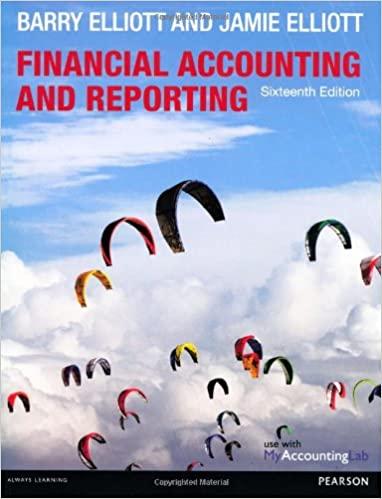Question
Sam, Dean, Bobby and Cass are the shareholders of a C-corporation named Winchester 4'Ever, Inc. Throughout the current tax year (payment dates provided below), Winchester
Sam, Dean, Bobby and Cass are the shareholders of a C-corporation named Winchester 4'Ever, Inc.
Throughout the current tax year (payment dates provided below), Winchester distributed $70,000 cash to its shareholders (25% to each shareholder):
February 1 - $15,000
May 31 - $15,000
November 30 - $20,000
December 31 - $20,000
The beginning stock basis for each shareholder was as follows:
Sam - $11,000
Dean - $3,000
Bobby - $35,000
Cass - $0
Assume Winchester distributed the $70,000 in a year when its current E&P was a negative ($50,000) and its accumulated E&P at the beginning of the year was a positive $50,000.
The company had historically rarely operated above the break-even level, as evidenced by the 0 balance in E&P at the end of the year the $70,000 was distributed, but Winchester's business really took off the first quarter of the subsequent year - in fact, within three months after year-end, Winchester's earnings and profits had soared to nearly $1,000,000. All four of Winchester's shareholders filed their individual tax returns on April 15 of the following year.
Which of the following is a correct statement?
Multiple Choice
A.Corporations can only make dividend distributions to the extent of their positive E&P balance. Since Winchester's combined E&P balance is 0, the entire $70,000 distribution amount will result in a return-of-capital and/or capital gain for each shareholder.
B.Corporations are not allowed to net E&P when determining the character of distributions; therefore, Winchester would characterize $50,000 as a dividend distribution, and the remaining $20,000 distribution amount would represent a return-of-capital and/or capital gain for each shareholder.
C.Companies must not forget to consider the impact to E&P of subsequent events - to the extent the company's E&P balance is materially altered after year-end, and if the shareholders have not yet filed their individual tax returns, the company must revise the character of the prior year distributions. Since the company became aware in March that its cumulative E&P balance far exceeded the $70,000 distribution amount and the shareholders didn't file their individual tax returns until April, Winchester would need to retroactively report the full $70,000 distribution as dividend income, and the shareholders would update their individual tax returns accordingly prior to filing.
D.Accumulated E&P is considered to be in existence on January 1, but current E&P is generally considered to be earned evenly throughout the year. Therefore, the combined E&P balance of 0 didn't technically happen until December 31, so a portion of the distributions made earlier in the year would actually be characterized dividend distributions. In contrast, if Winchester had waited until December 31 to distribute the full $70,000, the total amount distributed would represent a return-of-capital and/or capital gain for each shareholder since total E&P as of December 31 was 0.
Step by Step Solution
There are 3 Steps involved in it
Step: 1

Get Instant Access to Expert-Tailored Solutions
See step-by-step solutions with expert insights and AI powered tools for academic success
Step: 2

Step: 3

Ace Your Homework with AI
Get the answers you need in no time with our AI-driven, step-by-step assistance
Get Started


